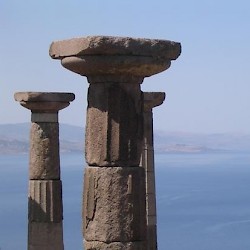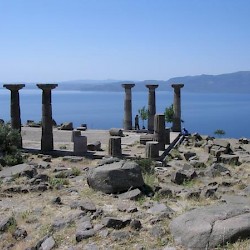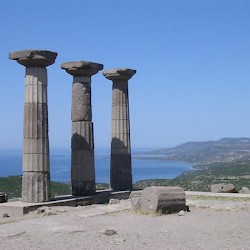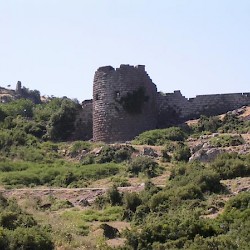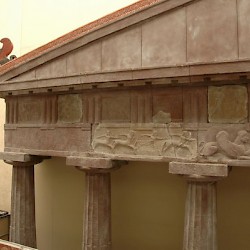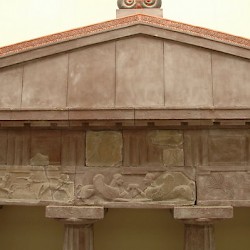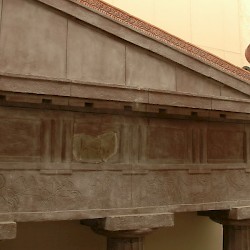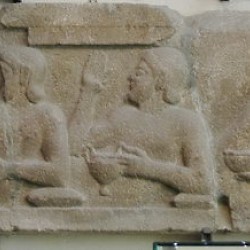Assos (Behramkale)
Q744631Assos (Greek Ἄσσος): Greek town in western Turkey, modern Behramkale.
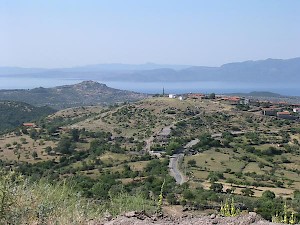
According to the Greek geographer Strabo, Assos was founded by Greeks from Methymna on Lesbos in the tenth or ninth century BCE,note but archaeologists have established that the site was already inhabited in the Bronze Age. Whatever the real story of its beginning, Assos was a success. The city had a natural harbor that was important for those who wanted to round Cape Lecton; Assos also had famous stone quarries and was well-known for its agricultural fertility. It rapidly became a prosperous town that could send out a colony of its own, Gargara.
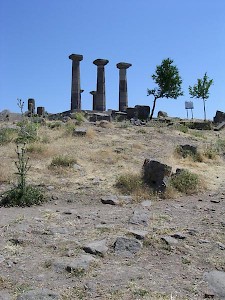
In the sixth century, Assos became part of the Lydian and Persian empires, but it retained its Greek character. The temple of Athena, built in c.530 BCE, is as impressive today as it was in Antiquity; it is the only temple in Doric style in Asia Minor.
After the Persian Wars, Assos was a member of the Delian League, but after the Athenian defeat in the Decelean War, the city became Persian. In 366, the city offered hospitality to a rebel satrap named Ariobarzanes, was besieged by the Persians, but held out.
We also read about Assian leaders like Eubolus and Hermias (a student of Plato), who made Assos into an important center of Greek civilization. One Hermias' friends was Aristotle of Stagira, who wrote his biological works in the city, and married to Hermias' niece Pythias. The city wall, which still stands, was built in these years. It was not until c.345 that Mentor of Rhodes reconquered the city for the Persian king Artaxerxes III Ochus.
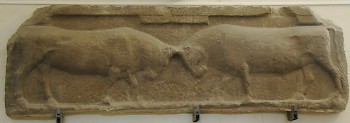
After the reign of Alexander the Great, there was no clear demarcation of the zones of influence of Antigonid Macedonia and Seleucid Asia, and there was room for independentcity states. Assos managed to expand its territory, adding towns like Polymedion and Lamponeia. (An important philosopher from Assos was Cleanthes.) However, it was in the end eclipsed by nearby Alexandria in Troas in the third century BCE, and became part of the realms of another city state, Pergamon, which was master in Assos since 241. In 133, the Pergamene Empire came to an end; Asia became a Roman province, and witnessed a new age of great prosperity.

Assos is mentioned as the place where the Christian teacher Paul, arriving from Alexandria in Troas, met Luke. From this period are also the Roman tombs. Among the other monuments of the city are Roman baths, a theater, a bouleuterion, and a gymnasium. Decline started in the Byzantine period.
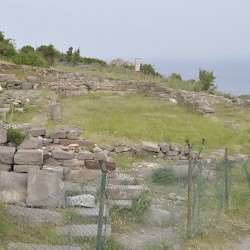 Assos, Basilica |
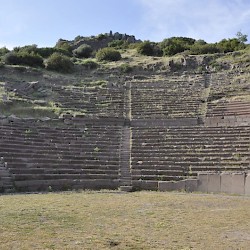 Assos, Theater |
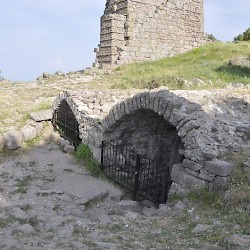 Assos, Cistern |
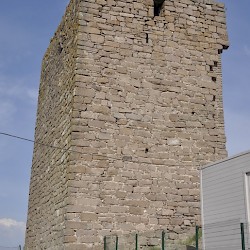 Assos, Tower |
